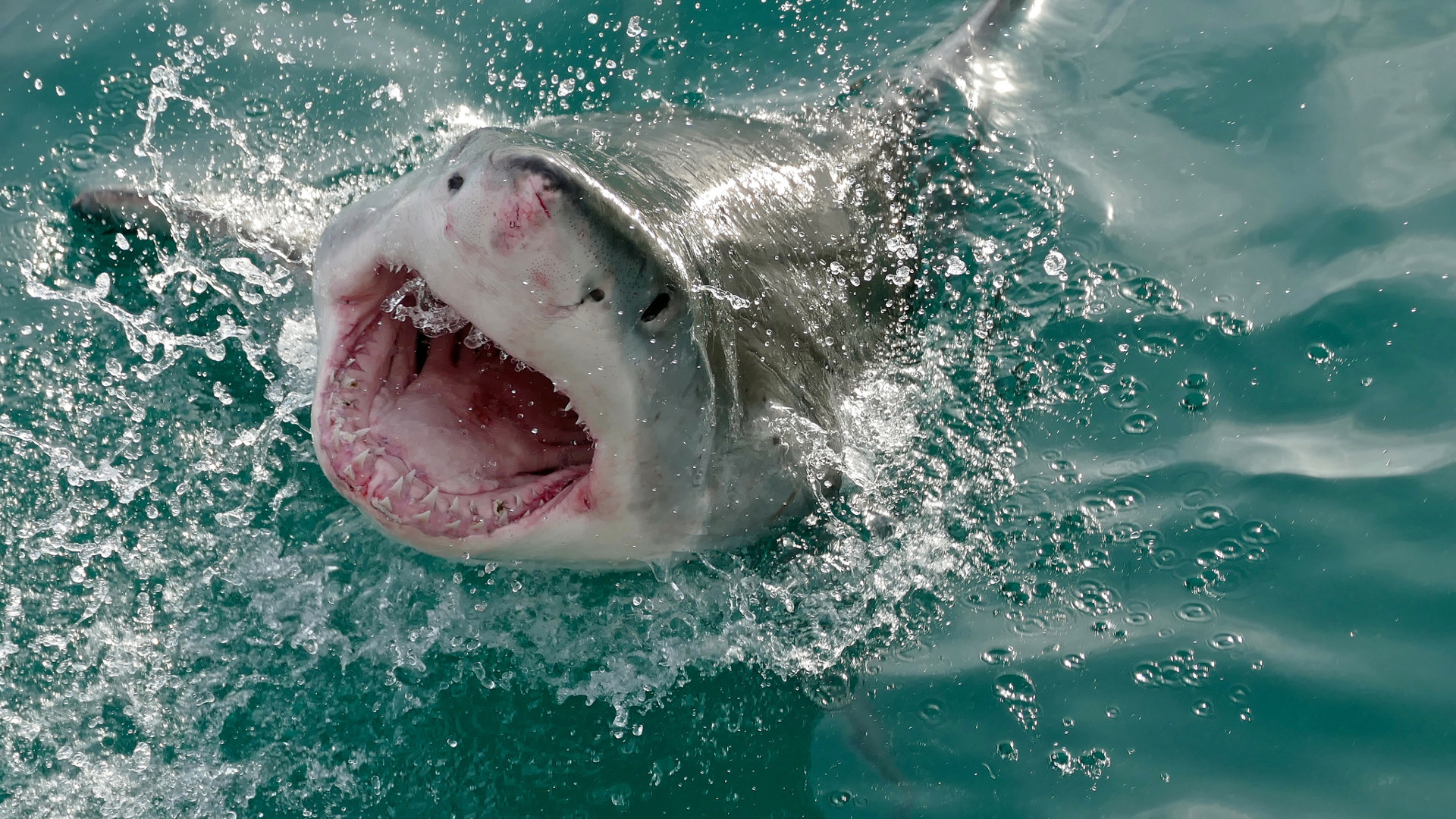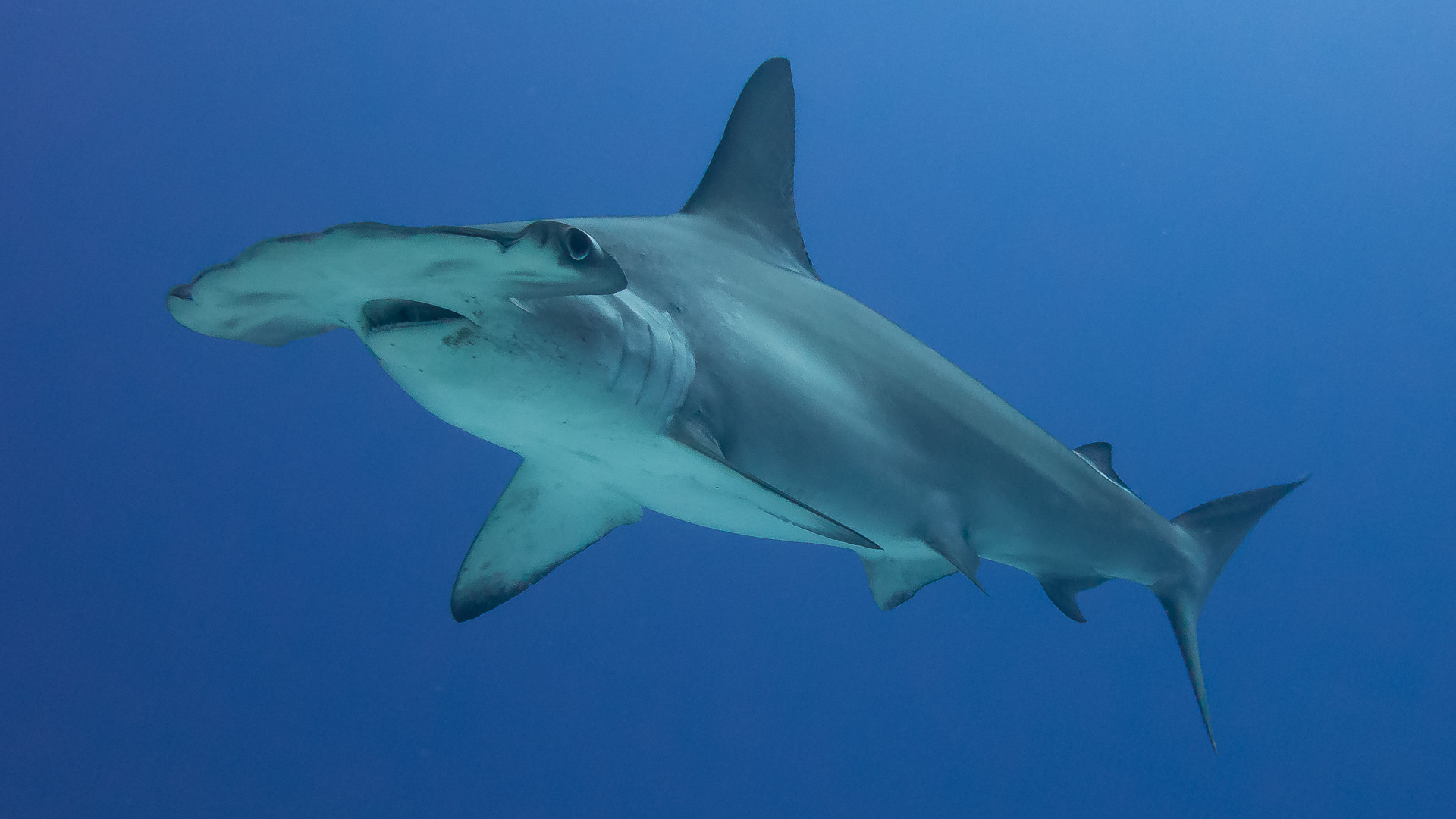Steven Spielberg’s iconic film Jaws first hit theaters on June 20, 1975 — 50 years ago this month. Based on the bestselling novel by Peter Benchley about a great white shark mauling and killing summer tourists at a Massachusetts beach community, the movie terrified viewers, many of whom blame it for a subsequent lifelong fear of sharks.
In contrast many shark scientists, educators, and conservation advocates say the movie helped inspire them to study or protect sharks — and they bemoan the way sharks were portrayed, which undeniably changed public perception on a massive scale.
Conservationists don’t claim that people thought sharks were cute and cuddly before they saw Spielberg’s great white terrorizing Amity Island beachgoers. Before Jaws, though, people didn’t really think about sharks very much at all, and now — more often than not — they’re terrified of them.

Sharks have faced many conservation challenges since the film’s premier, but what’s going on, and how much of it can be blamed on Jaws?
The Current State of Sharks
Sharks and their relatives (skates, rays, and chimaeras) are not doing well. A 2021 analysis found that 37% of these animals are assessed as threatened with extinction (vulnerable, endangered, or critically endangered) on the IUCN Red List, which makes them some of the most at-risk animals in the world.
Much of the worrying decline in shark populations lines up with the time frame since Jaws’ release.
A 2024 paper led by marine ecologist Nick Dulvy found that shark and ray abundance has declined by about half in the past 50 years, with very little of these population decline occurring before that. Many of the shark species now assessed by the IUCN Red List as endangered or critically endangered were doing a lot better just a few decades ago.

As a shark scientist myself, I find that particularly striking: Animals who have been swimming in the oceans since before there were trees on land and have survived every mass extinction event in the Earth’s history have declined by half since my parents graduated from college.
So what’s causing these declines?
The biggest threat to sharks and their relatives, the research shows, is unsustainable overfishing. Many of the most problematic shark fisheries have arisen in this time since the release of Jaws.
And the experts say Jaws had an influence on that.
Fear Beats Concern
There’s no doubt that Jaws terrified a generation. For months after it came out, people were terrified to go swimming — even in lakes and pools.
And since that time, even the most minor interaction between a human and shark can make worldwide headlines, with the media often sensationalize the encounter as a “shark attack” — even when the shark did not physically touch the human at all.
Meanwhile just 11% of news articles about sharks mention that they’re some of the most-threatened animals on Earth, discuss their ecological importance, or how talk about how their disappearance causes declines in key ecosystem services. The rest focus on sharks biting people.
This is not harmless. A variety of psychological research has shown that exposure to fearmongering media headlines about sharks makes people less likely to support shark conservation efforts.
A movie scaring people or changing behavior is not, in or of itself, novel. Alfred Hitchcock’s Psycho gave many viewers a lifetime phobia about taking showers, and the first Final Destination left a generation of people afraid to drive behind logging trucks. But critically, those specific fears don’t translate into the public’s policy preferences for water conservation, forestry practices, or protecting species of trees.
With Jaws, a fictional portrayal of sharks — stalking a beach and killing people just because they’re evil, which has no basis in actual shark behavior — has affected peoples’ real-world policy preferences for how we should treat them.
There’s even a name for this: The Jaws effect, a term coined in 2014 by public policy expert Chris Peppin-Neff.
“The Jaws effect argues that politicians use familiar fictional films as the basis for public policy responses to real-life events, because the problem and solution are already commonly understood,” says Pepin-Neff, an associate professor of public policy at the University of Sydney and the author of Flaws: Shark Bites and Emotional Public Policymaking. “The public believed this fictional story so completely, it meant that every shark bite was a murder, and every shark was a murderer. The Jaws story provided justification, and weakened pushback, for all the anti-shark policies that followed, including revenge shark hunts, changes to fishery laws, and delays in enacting shark conservation policies.”
Other experts agree. “Jaws really enabled widespread persecution of sharks,” says Dulvy. “Jaws meant that there was no room for a conversation about conserving sharks. If we talked about them at all, it was about how they should be killed.”
At the same time, the movie was not directly the source of most shark species’ declines.
A Wave of Consumption
The release of Spielberg’s film coincided with the dramatic rise of the Chinese middle class. During the 1970s and 1980s, millions of people experiencing newfound wealth wanted to show they were prosperous by eating foods once reserved for the emperor and his court.
These foods included a traditional delicacy called shark fin soup (which is exactly what it sounds like).
Driven by this demand, the global trade in shark fins began to explode. By the early 2000s, the shark fin trade reached about 20,000 metric tons in volume.

Dulvy says the movie influenced some of this.
“Public perception enabled the overfishing of sharks,” Dulvy says. He notes that the 1970s and 1980s also saw a huge global expansion of many fisheries, not just those targeting sharks. But many of those fisheries had major problems with shark bycatch — the accidental catching of sharks along with intended target species. Because people feared sharks, little effort was made to reduce their deaths in fishing nets intended for other fish.
Notably, despite widespread public misunderstanding of this issue among the amateur shark enthusiast community, the shark fin soup trade has not been the biggest threat to sharks in more than a decade. A mix of environmental activism reduced public interest in shark fins and anti-corruption measures by the Chinese government have cut back on luxury consumption, so the demand for shark fins has dramatically declined. Consumption of shark fin soup in China has fallen by 80% since 2011.
Lately the biggest issue is the shark meat trade, which involves different species of sharks and different countries than the shark fin trade. The shark meat trade increased by almost half in the early 2000’s, and is a multibillion dollar industry that gets much less attention from members of the public.
Jaws’ Mixed Legacy
While Jaws made people terrified of sharks, it was also one of the first movies to feature a scientist as a hero, and many marine biologists cite the “Hooper” character played by Richard Dreyfuss as their inspiration for pursuing a career in this field.
Additionally, Peter Benchley, the author of the book that the film was based on, dedicated his post-movie life to raising awareness and funds for shark conservation. He served on the board of multiple ocean-conservation organizations and penned four nonfiction books about protecting the ocean and sharks, including one that criticized media sensationism about shark “attacks.” And after his death, his widow Wendy Benchley cofounded the Peter Benchley Ocean Award for conservation education, which was resurrected this year after a brief hiatus.
Benchley’s post-Jaws life embodies the twin legacies of the movie.
“While there’s no denying that Jaws gave countless people a negative impression of sharks, it also fueled public fascination with the species, which has also been an important driver for conservation,” says Sonja Fordham, president of Shark Advocates International. “Starting in the 1990s, the white shark, despite its fearsome image, was among the first shark species protected in many countries. These actions jump-started the global conservation movement and led to a growing number of less-iconic species gaining policy attention.”
And the effect wasn’t limited to just the one species from the book and movie.
“The public image of sharks, and the policies meant to protect them, have improved remarkably in the last few decades,” says Fordham. “The challenge is to stay the course with measures that are working, strengthen those that aren’t, and expand the approach to protect closely related, and similarly vulnerable, rays.”
The Next 50 Years and Beyond
Ocean science and conservation, including but not limited to the conservation of sharks, are at a crossroads. In the United States, NOAA — the federal agency most directly related to ocean conservation — faces devastating budget cuts, and the Trump administration has undermined key conservation laws. Globally, nations are almost certain to miss the key 30×30 deadline for fully protecting 30% of the ocean by the year 2030. Modest shark conservation gains are being threatened as fishermen’s catch gets taken by sharks, leading to calls for an expanded shark fishery or culls. CITES, one of the most powerful international tools for endangered species conservation from trade, has protected most shark species, but how (and how successfully) their policies will be implemented remains to be seen.
Meanwhile, an onslaught of T-shirts, toys, DVDs, books, and a host of other products promoting Jaws on its 50th anniversary have hit stores and online shops around the world. While some of them carry pro-shark messages, many lean into the legacy of fear and carry the tagline “50 years of terror.”
View this post on Instagram
What happens to sharks over the next 50 years may depend on which of these messages survives: Will people’s fascination with these animals — and the appreciation of the vital ecological roles they serve — overcome the public terror that started with, and is still being fueled by, Jaws?

Previously in The Revelator:
Film Fakery: Does Shark Week Harm Conservation Efforts?


